Bookmaking tips from Blurb creators
The Blurb Holiday Gift Guide is full of some of our most successful indie bookmakers across a multitude of categories—from travel to cooking to photography to kid’s books. We asked them what they think aspiring indie self-publishers like you should know as you embark on your bookmaking journey, especially when making books fit for gifting.
Here’s what these creators had to say.
Start with what you love
It’s easy to get caught up in book trends and try to make work that you think will be popular, but the subjects you love have the most staying power. These are the projects you’ll actually wake up wanting to work on.
Michael Seif is a former New Yorker with a lifelong passion for photography and a book entitled 60s New York City. The advice that he has taken to heart is “photograph places and people you love.” In his case, he turned years of street photography into a stunning coffee table book that captured an entire decade.
“Eventually, those photographs become a time capsule,” he says. “[I’m an] 80-year-old now; my daughter, grandchildren, and old friends love to look back at life in the 1960s.”
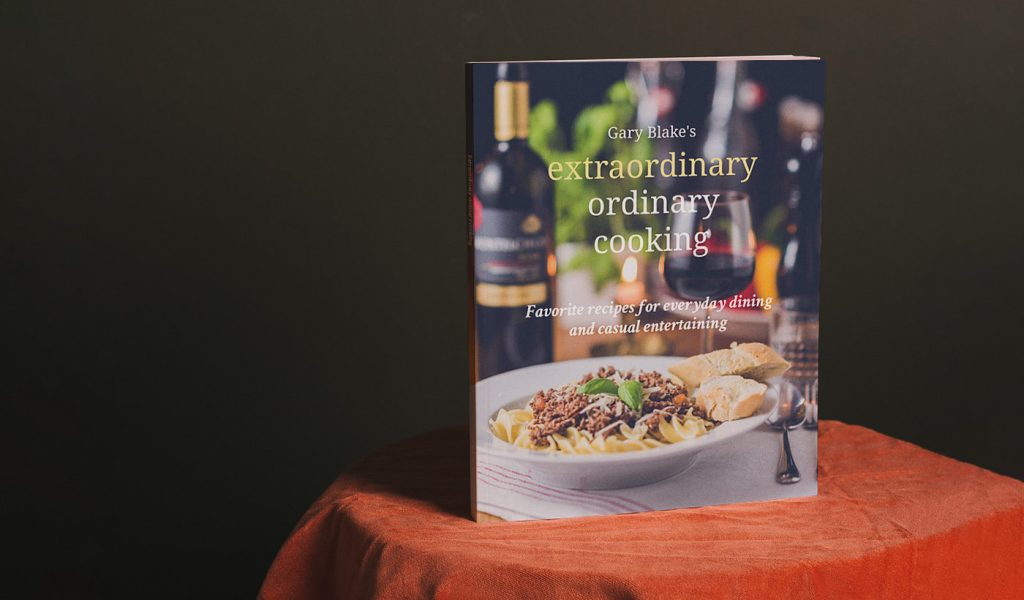
Make your passion contagious
Write what you know is something we’ve all heard at least once. And there’s a reason it endures. The things we are most passionate about are the ones we are most likely to stick with—and to be good at. So while Seif suggests creating art based on what you love, this advice is about sharing it with others.
Because it’s one thing to make art that is fun to create, but it’s another to make it marketable.
One of our gift guide creators, Gary Blake, followed his passion into a successful book with a second publication on the way. Blake has spent the past 50 years collecting and perfecting hundreds of recipes. When the COVID-19 lockdowns started, he decided it was time to organize his collection and share his passion for cooking and entertaining with the world. Thus Gary Blake’s Extraordinary Ordinary Cooking came to be!
When building his books, he strives to make his passion for cooking easy for others to join in on. He does this by keeping his cookbooks simple enough for even beginning cooks to enjoy. “Focus on your passion,” he advises. “Choose the one thing you love most and share it with others.”
Gregory M. Guity, New York-based Afro-Latin writer, jokesmith, and graphic designer, wholeheartedly agrees with Blake. He shared the same age-old advice we did, “Write what you know.” But he didn’t stop there.
“Write what you care about,” Guity continues. “There are others out there for whom your work will resonate. Create, and they will come.”
That’s proved true for Guity, as his book, Alleycat 2.0: Pilot, has found an excited audience in Teenage Mutant Ninja Turtle and Darkwing Duck fans.
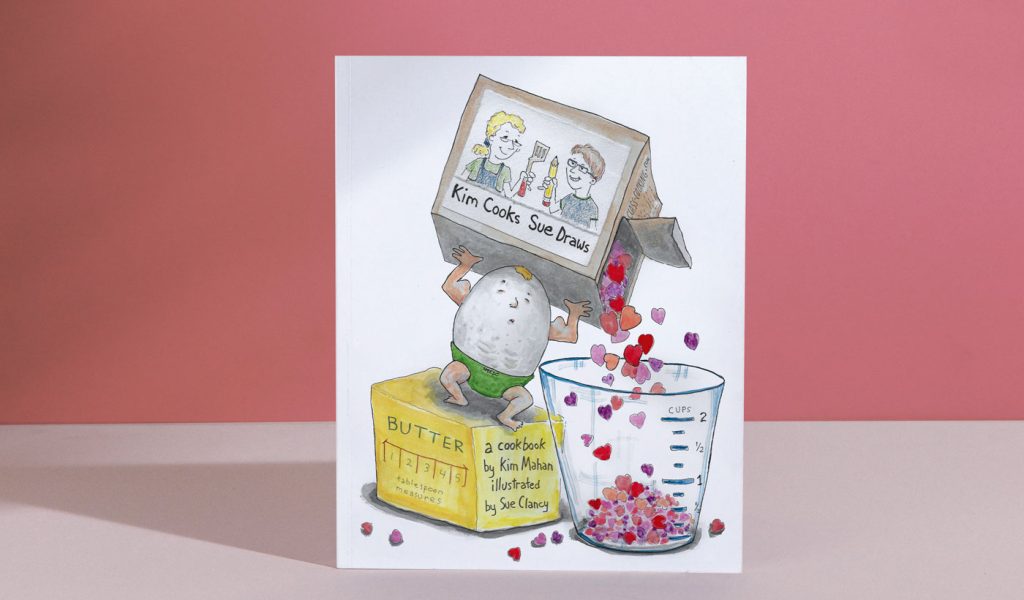
Stick to a theme
If you’re going to make a book, it’s vital that your work feels cohesive. This can be tricky if you’re passionate about many different things—trust us, we know. But there are ways to focus your creativity so that your final product feels like a refined version of your interests.
One way to do this is by sticking to a theme. Choose one country or region and do a deep dive if you want to make a book about your travels. Or turn your cooking class’s homemade recipes and fun into a connected cookbook.
That’s just what Kim Mahan and Sue Clancy did with their hilarious and helpful cookbook, Kim Cooks Sue Draws.
“A book doesn’t have to be complicated or perfect, just heartfelt,” they state. “The hardest part is finding a theme and tying it all together so it flows sequentially from cover to cover.”
But just how do you pick a theme and stick to it? The cookbook duo took notes from two of their favorite books: Comics and Sequential Art by Will Eisner and Syllabus: Notes from an Accidental Professor by Lynda Barry. Whether you’re planning out an illustrated cookbook or not, you should do the same!
Don’t forget the theme staples
Whatever the theme of your self-published book, one of the easiest ways to stay on topic and get audience attention is to add genre fundamentals. These will make your book immediately recognizable as belonging to your chosen category and help give your book structure as you start a draft.
For cookbooks, this might be easily understood ingredient lists, measurements, and step-by-step instructions. Travel books might include maps, itineraries, and packing tips at the front. And if you’re planning a book for the holidays, take a page from Erica Graham, South Australian teacher, writer, and illustrator.
“My advice for people creating books for the holidays is to look to include the features of Christmas that we know so well, like trees, characters, lights, food, and presents,” she says. “But never forget the thing that makes it most special—family.”
Her children’s book, Grandma Makes the Christmas Cake, does all of the above by sharing a family recipe and tradition with kids. She included not only the holiday staples in her illustrations but also the nostalgia from a real family recipe. To successfully bridge the genre gap between children’s books and cookbooks, she embedded the ingredients, times, and temperatures in the visuals themselves.
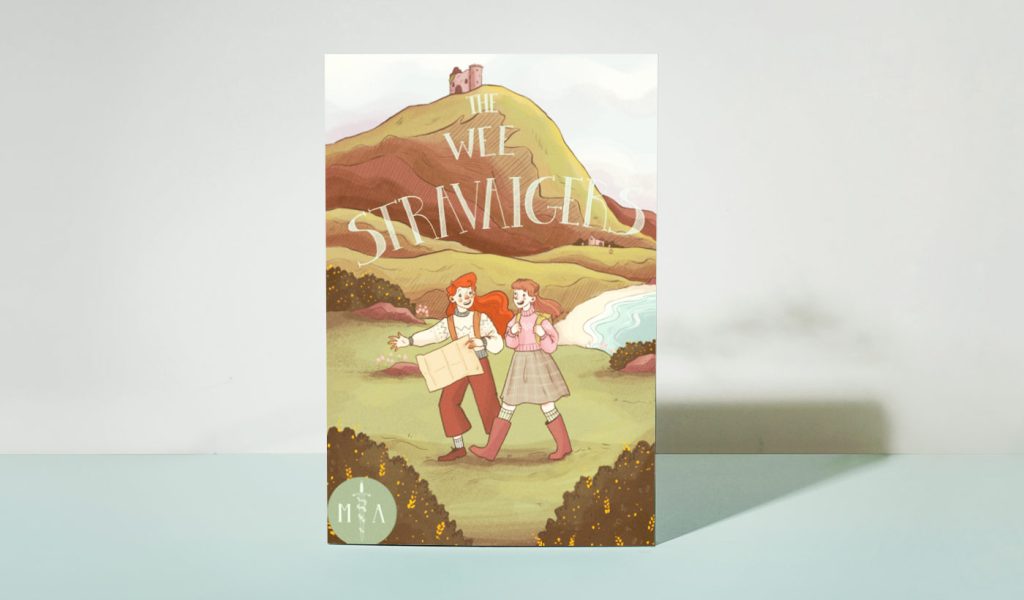
Spend time concepting
Now that you have bookmaking ideas for planning and structuring your book, it’s time to focus on your creative process. Of course, this is different for everyone, but there are a few things that all great creators have in common: they take their time, are persistent, and continuously iterate.
It takes time to create something great. You might have to write (or draw or cook) a lot of not-so-good content before you get to the good stuff. And that’s okay. The important thing is to keep going and not give up.
“My creative process always begins with producing plenty of concept art, experimenting with colours, characters, and composition before I find something that I really like,” says Morvern Anderson, Scottish illustrator behind The Wee Stravaigers.
Spending time on your book’s initial look and feel is essential, as it will inform the rest of the creative process. But don’t get too attached to your early concepts—be willing to experiment and change things up if necessary.
The next step for Anderson is always a comic script, which she breaks into sections to develop the story further. From there, she moves to thumbnails and page layouts before starting the pages themselves.
Even if you’re not an illustrator or visual designer, it can be helpful to sketch out your ideas or create an inspiration board full of images or colors that capture the feel of your book. And writers, you likely also want to spend time on voice and tone exercises to get a feel for how your book will sound before sitting down to create the first draft.
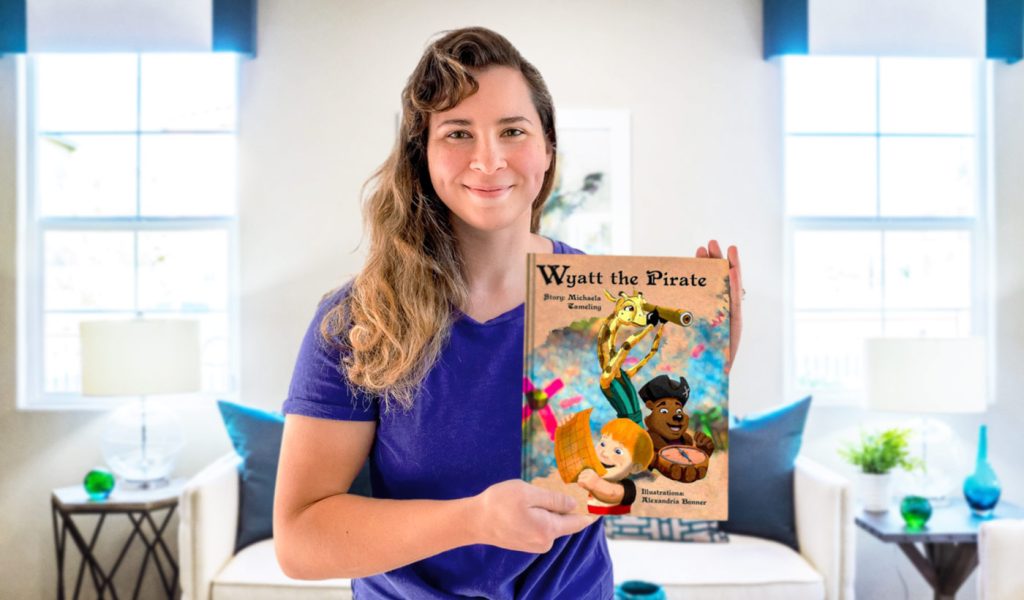
Set (and stick to) goals
Staying persistent is key to any creative endeavor, and it’s imperative when you’re learning how to self-publish a book. Once you have an idea of what you want to publish and notes on creative direction, set some goals—and do your best to stick to them. This will help you stay on track and keep your project moving forward.
“The most important piece of advice I can share with other book creators for the holidays is to stick with the process,” says artist and illustrator Alexandria Bonner.
Setting goals was integral when Bonner illustrated Michaela Tameling’s story, Wyatt the Pirate. Bonner gave herself a smaller goal of finishing two pages a week. “She was able to stay on top of her overall goal at her pace, and I was thrilled to receive updates from her!” writes Tameling.
One more thing from Bonner? “It may seem daunting, but make sure to pick a story that gives you the motivation needed to pull you toward the goal,” she advises. “It is so rewarding to see any idea turned into a physical item that brings joy to others!”
Team up!
Just as author Tameling found illustrator Bonner to bring her ideas to life with beautiful visuals, you might find that teaming up with someone else can help you bring your book to fruition.
When self-publishing a book, there are many moving parts—writing, editing, designing, printing, and more. Trying to do it all yourself can be overwhelming, so why not team up with someone with expertise in areas where you need support? This way, you can focus on what you’re good at and delegate the rest.
It’s also a great way to build relationships with other creatives in your field. Collaborating with someone can help you learn new skills and techniques, and it’s always nice to have a support system when you’re taking on a big project like self-publishing a book.
“Thanks to early social media…I connected with Kent Clark, an illustrator from Oklahoma who was as hungry to draw comics as I was to write one, and we made it happen,” writes Guity, creator of Alleycat 2.0: Pilot.
The comic co-creators initially planned their book as part of a larger anthology, but those plans stalled, and their project ended up sitting on Guity’s computer for years. Finally, when COVID struck, he decided it was now or never. Thanks to print-on-demand and his work with Clark, they could get Alleycat out into the world.
Utilize artificial intelligence
If you’re not ready to team up with a human, there’s no need to worry—you can still get help from technology.
That’s what artist and author Mark Terry did with his dystopian robot spy book, The Truth About Bees. All the artwork in this graphic novel was created with AI (plus Terry’s Photoshop skills). He even included an interview with the artist at the end of the book—written entirely by a robot.
Not sure about artificial intelligence doing your art? Terry explains that the concept of author and artist is changing now that computer programs can write prose or artwork indistinguishable from human creators.
“We can fear this change, this upset to the status quo, or we can use it to expand our artistic outputs,” Terry writes. “People did not stop painting when photography was invented. People did not stop writing songs with the advent of the synthesizer and sequencer. It is now possible for anyone to produce a graphic novel, even with no artistic ability at all.”
Follow in Terry’s footsteps with his two favorite AI tools: DreamStudio, which can create paintings in any art style in seconds, and NovelAI, which can generate text but not necessarily great plots or consistent storylines. He used both as partners in his unique book project.
Seek constructive criticism
Whether creating your book alone, with a team, or with a robot, it’s important to get feedback from others—preferably from people you trust to give you helpful and kind constructive criticism. If you have a finished product, it’s a great idea to seek out beta readers who can give you feedback on the story, characters, and more.
Artist and illustrator Donna Huntriss found her beta readers invaluable when creating her book, The Birds in the Backyard. At first, she wanted to do a book with only illustrations and no words. The feedback she got was, “We want more! We want to know about the birds you have featured.” Huntriss heard them loud and clear: “I really did my research on each of the birds to demonstrate how birds interact in our backyards.”
Although Huntriss waited until she had a finished product to request feedback, others, like musician, composer, and illustrator Michael Johnson, look for it each step of the way.
“While you’re making [your book], seek advice, get criticism, reach out to experts who will help you, and keep remaking it until it is the best version of itself it can be,” Johnson suggests. “Be honest with yourself about whether what you made is worthwhile. If you feel what you made is worthwhile, then at that point, share it with the world.”
Johnson spent years on his book, Success!, continuing to refine it until it was exactly what he envisioned.
“Above all, take heart,” he continues. “The world may not be ready for what you made in your lifetime, or ever, but at least you will have spent your time on earth doing what you love, and the beautiful things you made will live on.”
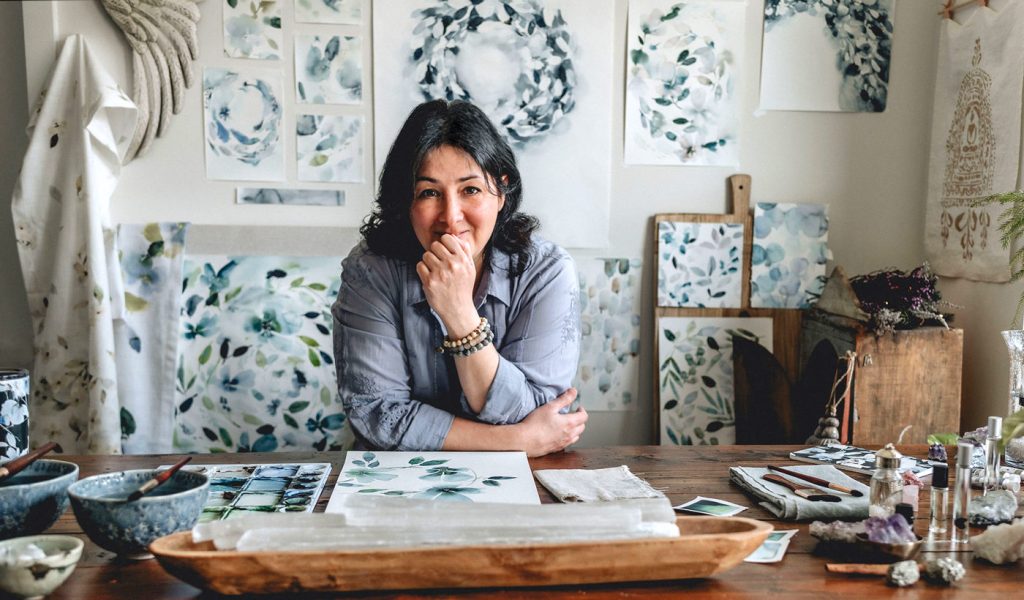
Print a proof
Once you’ve created, formatted, critiqued, and readied your book, it’s time to print a single copy. A proof is a test copy of your book that allows you to check for any errors or changes you need to make before sharing the final version with the world.
Stephanie Ryan, an intuitive artist, watercolorist, and teacher based out of Pennsylvania, did just that. She began imagining and working on her book, EMPATH, in the late spring, giving herself nearly a year to be ready for selling this holiday season.
“I ordered many draft copies and spent time being with them, carrying them around and having them out in my space,” Ryan states.
She suggests everyone should do the same: “Start early and let yourself be with your book, make the adjustments, and actually hold it in your hands for a time.”
Enjoy the final product!
After all the hard work of creating, writing, illustrating, and formatting your book, it’s finally time to enjoy and share the finished product. So sit back, relax, and flip through the pages of your beautiful new book—you did it!
“Despite so much of our lives being digital, I’m a designer who truly values the real, physical things in this world; in books, I appreciate the quality of the paper, type, color, and images, and feeling the pages turn,” says Claudia Mauner von Kaenel Gellert, a graphic designer, author, illustrator, and teacher. She loves flipping through her book, Fashion and Humor.
“It’s very rewarding to hold your own beautifully produced book in your hands and give it to friends or sell to clients,” she continues.
A finished book is well worth the journey. Hopefully, you find the process of creating just as rewarding.
***
Find inspiration from these creator’s in our Holiday Gift Guide. Or get started on your self-published book today!


This post doesn't have any comment. Be the first one!